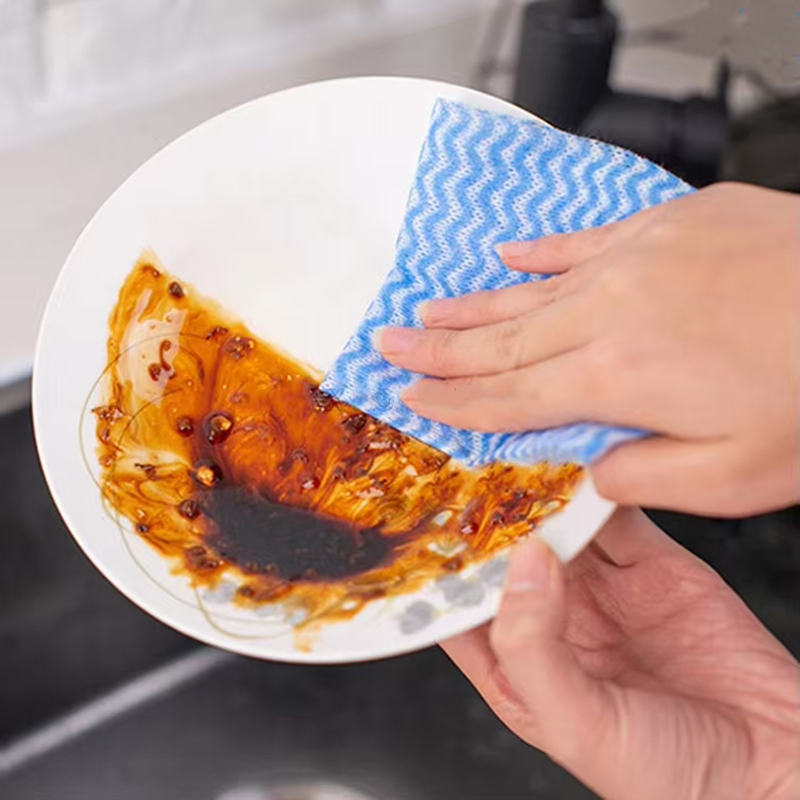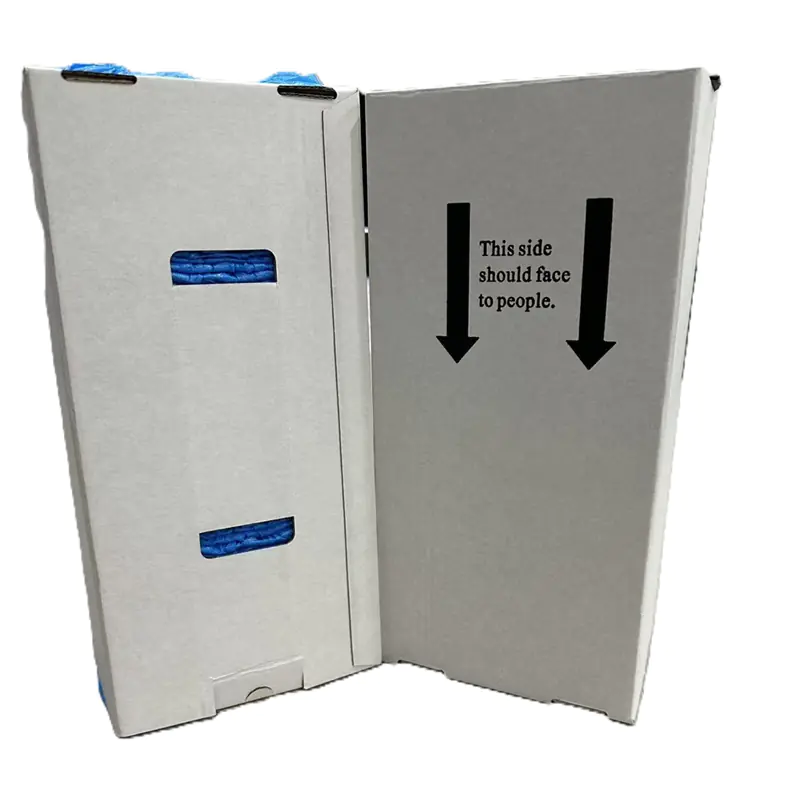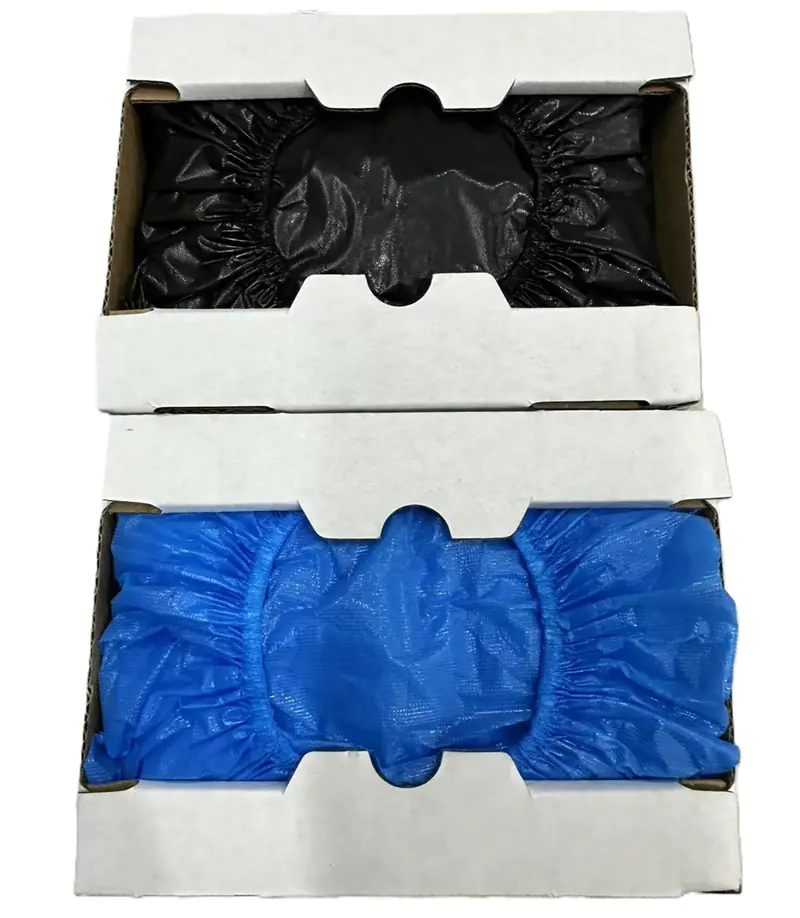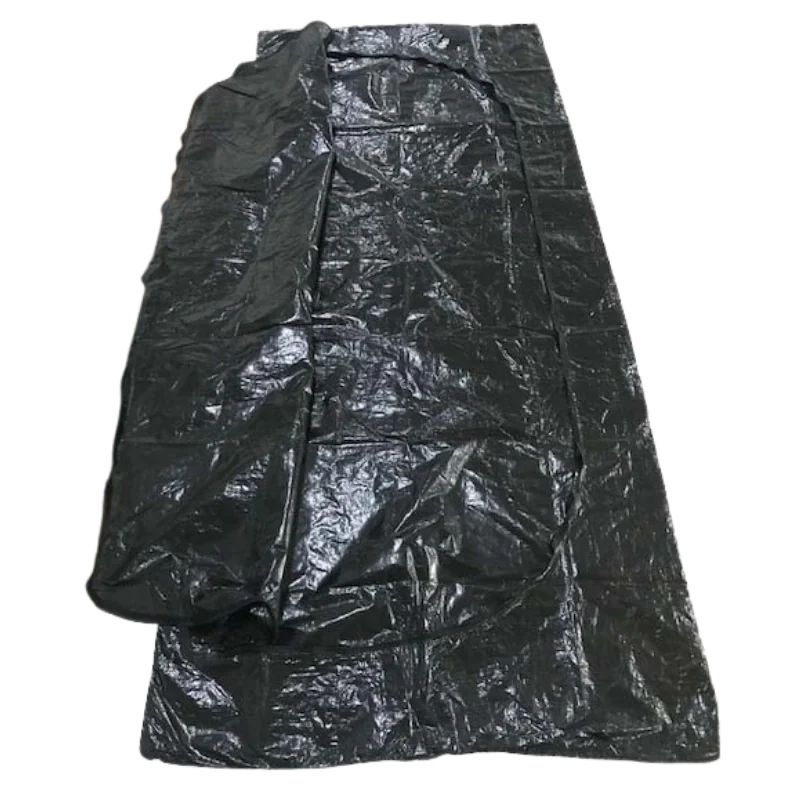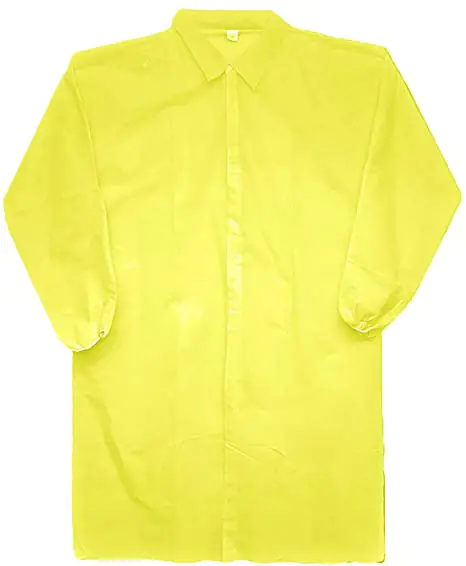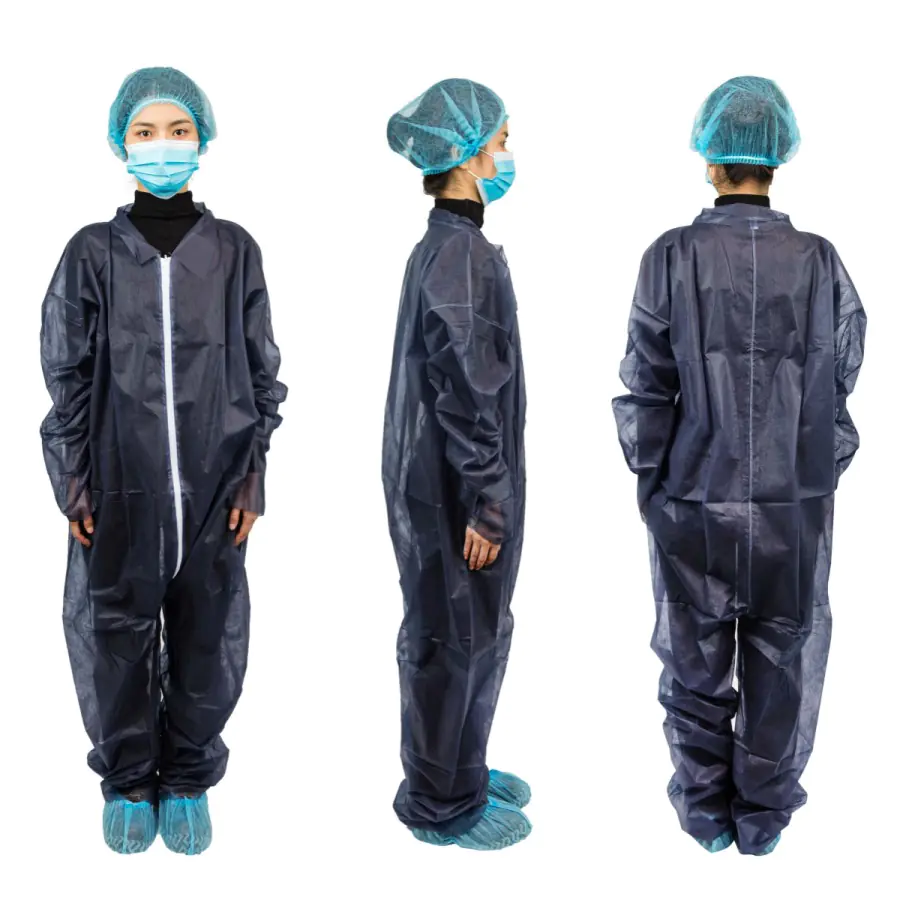Have you seen new kinds of cloths for washing dishes in home kitchens? These are disposable dishcloths. You use them once or maybe a few times. Then you throw them away. They are like strong single-use kitchen towels or paper towels you use just once.
These cloths are not like the cloth towels you wash and use again. They are also not like sponges you keep using. This is part of the reusable vs. disposable debate.
Many people are buying these disposable dishcloths. Why? There are good reasons. People want them more now. This rising demand shows consumer behavior shifts.
Let’s look at why these cloths are becoming a kitchen must-have. We will see the good things about them (benefits). We will also see things to think about (considerations) before you buy them. What is best for your household cleaning routines?
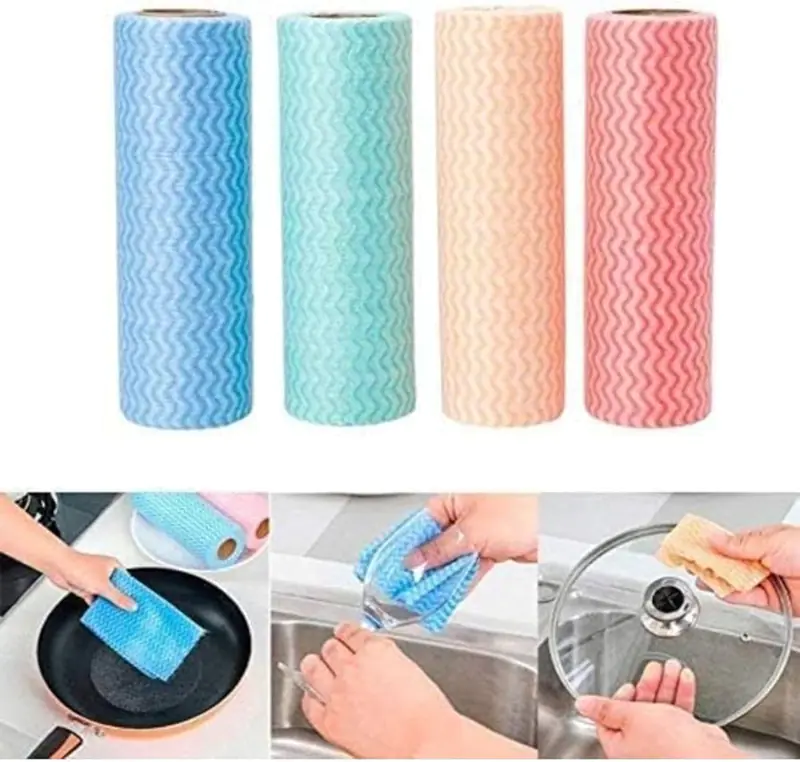
Why People Want Them More
Why are so many people picking disposable dishcloths? Several big reasons drive this convenience-driven demand.その global market growth for kitchen towels shows this trend, aiming for $28.6 Billion by 2032.
- Thinking About Germs After Sickness After people got sick a few years ago (post-pandemic hygiene awareness), many worry more about germs. This is a key hygiene driver. Old wet cloths and sponges can have lots of germs. Germs can spread from the cloth to your plates or counters. This is called cross-contamination. We don’t want that! Disposable dishcloths help with cross-contamination prevention. You use them and toss them. This means fewer germs can grow (bacterial growth prevention). Some new cloths even fight germs. They might use antimicrobial textiles or have antibacterial coatings. This fits with new post-pandemic cleaning habits and overall sanitization trends. Many people (about 63%) now want antibacterial properties when buying cleaning items. This helps make kitchen utensil sanitation better and improves hygienic kitchen practices.
- Saving Time and Making Life Easy Washing dirty, sticky dishcloths is no fun. Disposable dishcloths offer convenience and save you time. You don’t need to wash them. You don’t worry about dishcloth longevity or how long the cloth will last. They are ready when you need them. Got a small spill? Grab one! Need to wipe something fast? Grab one! This is good for busy people. It makes cleaning easier. They are a simple choice instead of sponges, part of the sponge replacement trends.
- Caring About the Earth (Eco-Consumer Shift) People want to help our planet. “Disposable” sounds like it might be bad for the environmental footprint. But many new disposable dishcloths are made from better stuff. This is an eco-consumer shift. You can find cloths that break down easily. These are called biodegradable dishcloths. Some are compostable kitchen products. That means they can turn back into soil if you put them in a special bin. These cloths often come from plants. Some use bamboo fibers. Others are cotton-based dishcloths. They offer plastic-free alternatives to some sponges. Sponges can make tiny bits of plastic called microplastics when they wear out. We don’t want those in our water. Many health-conscious consumers, especially the rise of eco-conscious millennials, want these eco-friendly cleaning products そして sustainable kitchenware. The market for natural cleaning products is growing fast (about 7.8% each year). Even if they are thrown away, some cloths made from organic cotton kitchen towels material make less pollution (94% less greenhouse gas (GHG) emissions) than paper ones. Look for cloths made using pesticide-free production methods.
- Easy to Buy Online (E-Commerce Accessibility) It is super easy to buy things on the computer now (E-commerce dominance). You can find lots of disposable dishcloths online. You can read consumer reviews analysis to see what other people think. You can check prices easily. This makes retail availability simple. Many people like bulk purchasing behavior online, buying large packs which can sometimes be cheaper overall. These cloths are sold all over the world. The North America market buys a lot because people there like convenience-driven purchases. Higher living standards and the impact of urbanization (more people living in cities) also play a role in this regional demand.
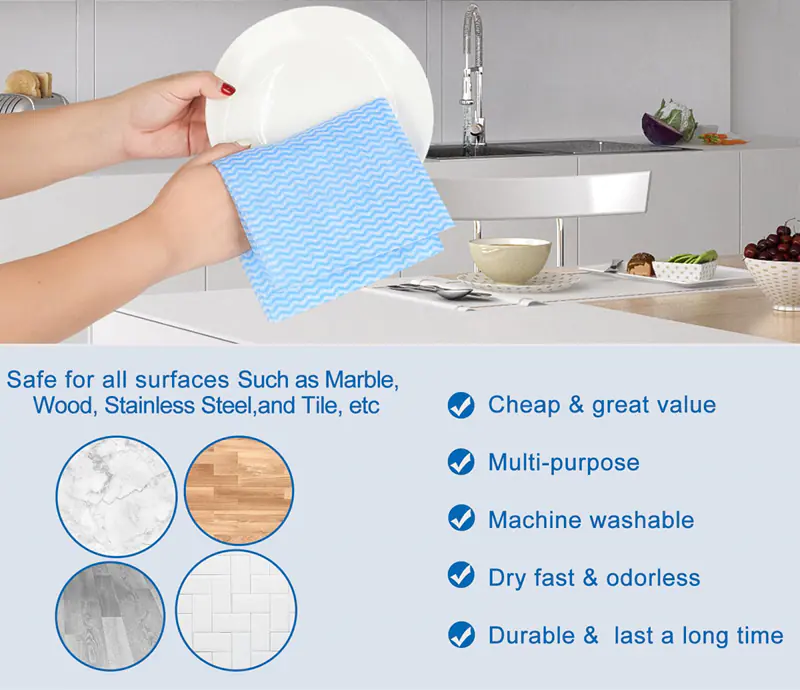
Good Things About Throw-Away Dishcloths
Using disposable dishcloths has good points (benefits).
- Very Clean (Superior Hygiene) This is a big plus. You throw the cloth away after using it. Germs don’t have time to grow like they do on a wet cloth you keep using. This is super important for cross-contamination prevention. It keeps your kitchen cleaner and safer. It helps stop mold too because they aren’t sitting around wet. This can help with allergen reduction as old cloths trap dust. Good hygienic kitchen practices are easier to follow.
- Use for Many Things (汎用性) You can use these cloths for lots of jobs (multi-surface cleaning). Wash dishes. Wipe counters. Clean the stove. Clean the fridge. They soak up water well (moisture absorption). Many have ultra-absorbent fibers. They are often made with special non-woven fabrics. These fabrics are good at cleaning. They usually work well with soap (dishwashing liquid compatibility). Some don’t leave fuzzy bits behind (lint-free properties).
- Can Save Money (費用対効果) Wait, how can throw-away things save money? Think about it. A cost-effectiveness analysis might be surprising. How often do you buy new sponges because the old ones smell bad? How often do you buy new cloth towels because they are stained? Maybe disposable dishcloths cost less in the long run. A cost comparison shows reusable cloths might cost $12–$20 per year. Disposables might be $5–$10 per month. The cost per use analysis depends on how many you use. For small homes, or for special messy jobs, they might be a good deal. Retail pricing strategies, like selling big packs, helps save money too.
- New Ideas Help the Earth (Eco-Friendly Innovation) Like we said, companies are working on sustainable kitchenware. This helps the home care industry growth towards being green. You can find biodegradable textiles そして compostable dishcloths. Some use cotton kitchen towels material scraps or fast-growing plant-based fibers. This supports waste reduction strategies if composted correctly. This links to zero-waste kitchen movements. Look for signs on the package that say they are good for the Earth (eco-label certifications). This shows companies are thinking about manufacturing sustainability. Some may even aim for carbon-neutral production.

Things to Think About Before You Buy (Critical Considerations)
Okay, they sound good. But wait! Think about these important points too.
- What Are They Made Of? (Material Matters) Not all disposable dishcloths are the same. This is a key consideration. Some have plastic in them. These can make microplastics. Look for cloths made from 100% cotton. Or look for bamboo fibers (a top material preference). Or wood pulp. Choose plant-based fibers. Pick ones that say biodegradable materials または compostable kitchen products. Read the box! See if it says non-woven fabrics. These are often good absorbent materials. Think about softness vs. durability. Do they feel okay? Some cheap ones might have dyes or glues. Worry about chemical leaching risks. Look for cloths that say they are chemical-free cleaning options. Check for pH-neutral compatibility if you clean delicate things. Some special cloths might even have UV-resistant materials, but that’s rare for dishcloths.
- What About Trash? (環境への影響) This is a big question in the reusable vs. disposable debate. Throw-away items make more trash (post-consumer waste). Waste concerns are real. Textile waste statistics show that cloths and clothes make up about 8% of landfill trash. Making these cloths also uses power (energy-intensive production) and water. Think about irrigation impact studies for cotton. But washing reusable cloths uses power and water too! A full product lifecycle assessment (LCA) helps compare the total environmental impact. If you use disposable dishcloths, try to get compostable ones. Then, follow local composting regulations そして disposal regulations. It is hard to recycle used cloths. Most places lack textile recycling infrastructure for them (dishcloth recycling challenges). Think about the carbon footprint calculation. Some brands try to use circular economy models (using waste to make new things).
- Look for Proof (認証) Does the package say “eco-friendly”? Look for proof! Find real eco-label certifications. These badges show that someone checked if the cloth meets consumer safety standards for being biodegradable または compostable. Some companies might say nice things that are not totally true. That’s called greenwashing concerns. Watch out for that. Look for trusted signs like EPA Safer Choice.
- Cost and How You Use Them (Cost vs. Use Case) Think about your household cleaning routines and budget. Do you clean big messes all the time? Or just wipe up small spills? Disposable dishcloths might be great for yucky jobs, like cleaning up after raw meat, for better cross-contamination prevention. But maybe you don’t need them for every little thing. Think about the cost vs. sustainability trade-offs. Maybe they work best for certain demographic preferences, like busy people in cities. Or for people in small apartments where washing cloths is hard. They are made to be used only a short time (dishcloth longevity is low). This affects the cost per use analysis. They usually are not dishwasher-safe options.
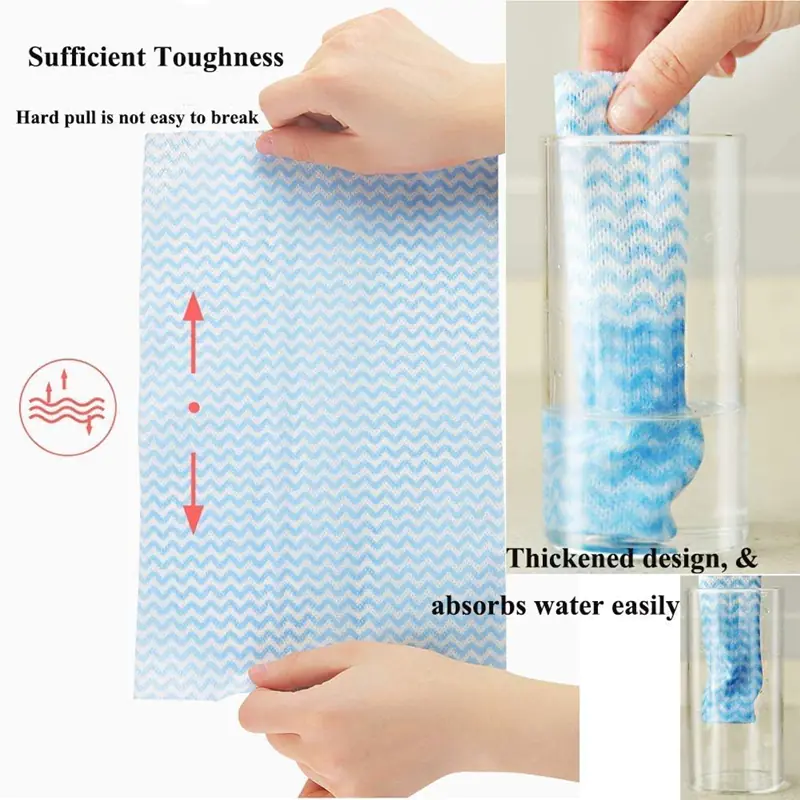
How to Pick the Right Cloth
There are many kinds. How do you choose?
- If You Care About the Earth:
- Find biodegradable dishcloths.
- Look for compostable kitchen products.
- Pick cloths with no plastic (plastic-free alternatives).
- Choose plant-based fibers like bamboo fibers.
- Look for cloths made with no bad chemicals (chemical-free cleaning).
- Think about brands focused on manufacturing sustainability and maybe carbon-neutral production. You might like these handy disposable dish cloths that come on a roll if they meet your eco goals.
- If You Want to Save Money:
- Use bulk purchasing behavior (buy big packs).
- Look for store brands (private-label product growth).
- Simple cotton-based dishcloths might be cheaper if you can’t compost.
- If You Need Strong Cloths:
- Look for thick cloths with many layers. Check the durability comparison.
- Make sure they have good oil/grease absorption.
- Find cloths with a rough side for scrubbing to help dishwashing efficiency. Check out these strong disposable dish wipes for the kitchen.
- See if they have good stain resistance. Look at colorfastness testing info if color matters. Some might have moisture-wicking technology to dry a bit between wipes during one use.
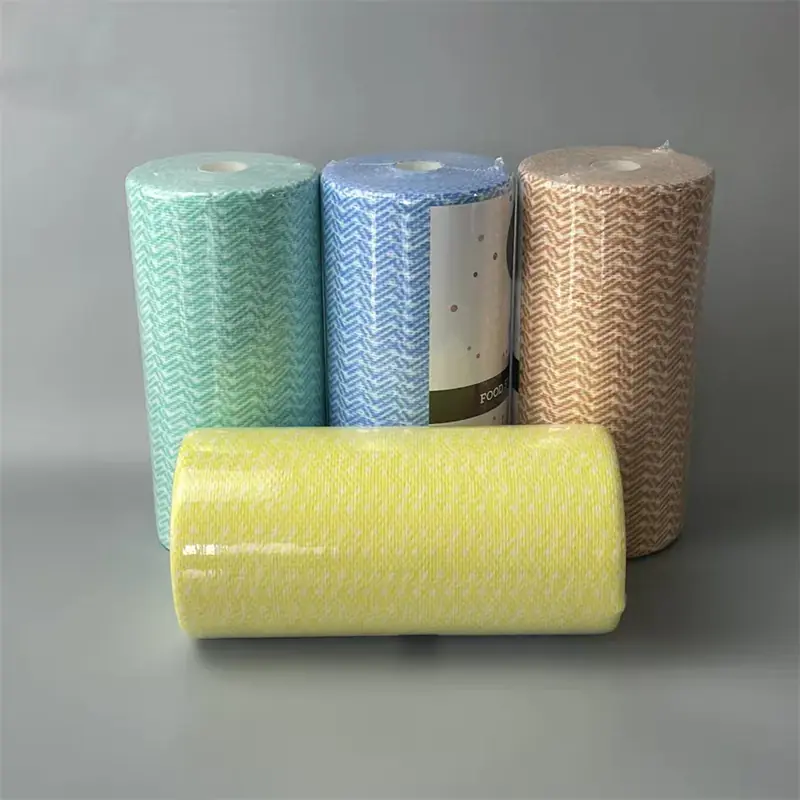
Answering Your Questions
People often ask these things. Filling consumer education gaps is helpful.
- “Are they really good for the Earth?” It’s tricky. The best thing is often a reusable cloth you wash well. But! Compared to plastic sponges that make microplastics, or using tons of paper towel alternatives, some biodegradable または compostable dishcloths can be better eco-friendly cleaning products. Especially if you compost them. Just make sure they don’t have hidden plastic. Watch out for greenwashing in marketing. Support sustainable textile alliances if possible. Think about the whole product lifecycle assessment (LCA).
- “Do they clean as well as sponges?” Sometimes yes, sometimes no. Performance varies. Many disposable dishcloths offer excellent moisture absorption. They are great for multi-surface cleaning like wiping counters. Some are not rough enough to scrub hard pots like a sponge can. But some new ones are made with texture for scrubbing. It depends on your hand-washing preferences and cleaning style. They are a key part of sponge replacement trends. They do help with odor control solutions because you throw them away before they get stinky. Many are made from versatile non-woven cleaning wipes.
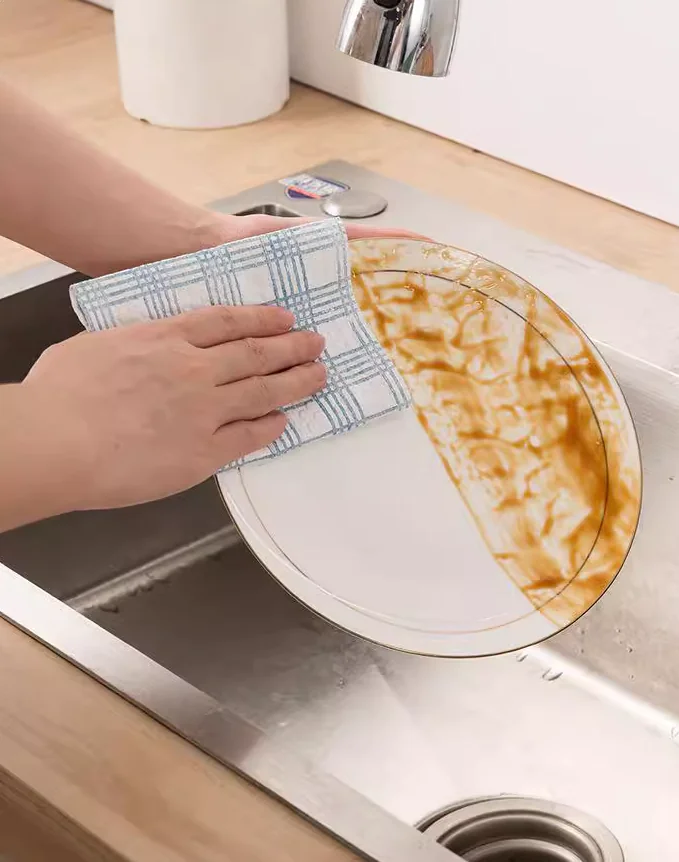
What’s Coming Next? (Future Trends)
Things are always changing. What’s new for disposable dishcloths?
- Better Packages: Look for better packaging sustainability, like bags you can close again made from recycled stuff, or plastic-free alternatives. Good consumer sentiment favors this.
- Get Them Sent to You: Maybe subscription-based models will become more common. This might increase brand loyalty analysis and affect retailer partnerships.
- Mix and Match Designs: We might see more smart kitchen innovations. Think about ergonomics in design. Maybe reusable handles with cleaning heads you throw away. Maybe better temperature tolerance for hot jobs or UV-resistant materials.
- New Materials Science: Expect more new absorbent materials そして quick-drying textiles. More research on antimicrobial textiles そして antimicrobial efficacy testing is happening. We need to watch for antibiotic resistance links. Changes in import/export dynamics または raw material cost fluctuations could affect prices. Market penetration rates will likely grow, especially with Asia-Pacific urbanization rates rising and strong Europe sustainability initiatives in the Asia-Pacific market and Europe.

The End Story (結論)
について rising demand for disposable dishcloths in home kitchens is clear. They offer real benefits in home kitchen hygiene, convenienceそして cross-contamination prevention. New eco-friendly cleaning products like biodegradable dishcloths そして compostable kitchen products address some environmental footprint worries.
However, it’s important to be a smart shopper. Consider the material matters, the true environmental impact, and the cost-effectiveness analysis for your household cleaning routines. Look past greenwashing concerns and seek real eco-label certifications. Understand the reusable vs. disposable debate and make choices that fit your values and needs based on the benefits and considerations.
Whether for everyday use or specific cleaning tasks, disposable dishcloths (like single-use kitchen towels) are changing kitchen organization trends and how we think about clean. By weighing everything, you can decide if these cloths fit in your home. The global market growth in the home care industry suggests many people are finding they do, especially with changing pre/post-pandemic hygiene norms and ongoing cultural shifts.

